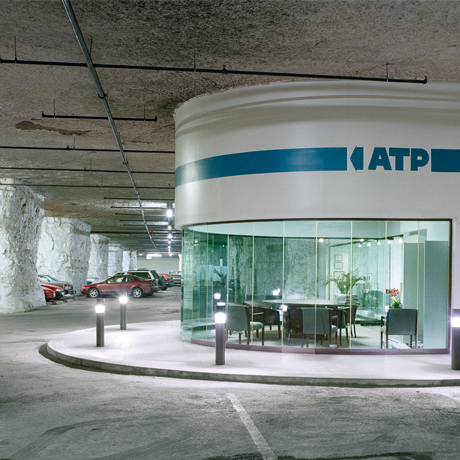Wayne Barrar - An Expanding Subterra
Until Sunday June 27
An Expanding Subterra is a photographic investigation into the private spaces of artificial underground worlds. This collection of works from Barrar’s seven-year international project presents a bizarre and unsettling subterranean existence that literally probes beneath the surface of what most people have experienced.
Developing on previous works that portray landscapes tainted by the scars of industrial and commercial rapacity, Barrar here exposes environments deep within the landscape that bear no resemblance to anything natural. They range from deep mine staff rooms to post-mining habitations such as office complexes and even leisure and residential spaces. In the attempt to create urban environments, roads are paved, rock faces are painted, and furniture is moved in. What is created is a bizarre pseudo-urban reality lit by fluorescent lights.
Many of the images show corporate spaces such as an underground office building and a company entrance, complete with car park and footpath. They appear conventional and familiar, though parts of these spaces bear the coarse surface of bedrock, contrasting with the surrounding constructed walls and imposing on an otherwise normal space. The images are formally conventional with a documentary character, but it is the stillness and otherworldly ambience within the works, most of them devoid of people and none of them lit by natural light, that alienates them Despite the austere and desolate atmosphere of the utilitarian grottos, they are also used for recreation and permanent residency.
The most uncanny works are the black and white images taken at Coober Pedy, a small opal-mining town in Australia known for its large number of underground residents. Refurbished opal mines comprise urban districts including bars, hotels, churches and a museum. The place’s Aboriginal name translates to “white man in a hole,” and Barrar’s images convey the visual juxtaposition this name suggests. Neatly-made beds, Christian iconography, and the drum kit and posters adorning a teenager’s bedroom are at odds with the primitive surroundings and it is this collision of culture and nature that is at the heart of Barrar’s works.
The exhibition addresses the industrialisation of nature and the politics of land use. Culture and nature visually compete for prominence in the images, as human fabrication tries to dominate nature and mask the reality of location.



